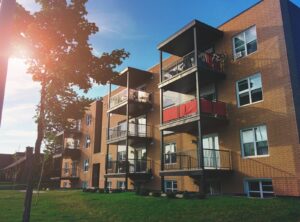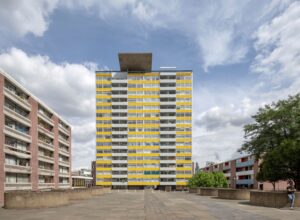This week the government announced proposals to resume collecting data from local authorities on the amount of brownfield land suitable for housing in their area – a major victory for the Campaign to Protect Rural England (CPRE).
Currently, the most vexed issue in town planning is how we build up to 3 million more new homes over the next 10-15 years in order to accommodate population growth and the need for affordable housing. CPRE has long campaigned for ‘brownfield first’ planning policies in order to minimise the loss of the countryside that we have.
In 2014 we commissioned the University of the West of England to report the evidence on how much brownfield land is available for new houses. The resulting report, From Wasted Spaces to Spaces for Living, was published in November 2014 and was widely welcomed, including by planning minister Brandon Lewis and Sir Michael Lyons, who led the Labour Party’s housing policy review.
The research calculated that 976,000 homes is the absolute minimum capacity of brownfield land in England. This amount alone would provide a four-year supply of homes if no other land is used and no new brownfield sites become available.
We are calling for the reintroduction of a clear, consistent
‘brownfield first’ approach in national planning policy
That figure identifies brownfield sites with existing planning permission as well as derelict and vacant land, but does not include sites with the potential for development or land that will shortly become brownfield. The 2014 further alterations to the London Plan, for example, state that brownfield ‘opportunity areas’ – which include land still in use – could accommodate 300,000 new homes.
The research also confirms that far from drying up, brownfield land is a renewable resource. Planning data from the 82 local authorities that responded with figures for both 2011 and 2012 show that 1,658 hectares of land were redeveloped and removed from the database between 2010 and 2011, while 1,725 were added.
There is some good practice amongst local authorities, but also difficulties in accessing central government incentives or overcoming the complexity of certain sites. Strategic housing land availability assessments are the principal means by which local authorities identify land as suitable for development. Currently, these are too inconsistent in information and format between local authorities to allow their use in gaining a national picture of the availability of brownfield land for housing.
Other barriers for brownfield development include the cost of site remediation and local infrastructure provision; the difficulties for small and medium-sized builders trying to enter the market; the availability of cheaper greenfield sites; and the lack of accurate data on brownfield land and its ownership.
To turn potential into reality, we are calling for the reintroduction of both a clear, consistent ‘brownfield first’ approach in national planning policy, and of mandatory reporting to the National Land Use Database. This week’s announcement, then, is a major step forward.
Encouragingly, ministers are also looking to take more action to regenerate brownfield land. Last August the government called on local authorities to bid for the creation of Housing Zones. Such zones have to mostly be on brownfield land and will benefit from government loans and brokerage to help assemble and develop sites. In early January a shortlist of 30 sites was published.
CPRE can support many of the shortlisted sites. Funding, not planning, has long been the barrier to regenerating sites like Stoke city centre. Over 83% of all the brownfield sites our report identified have made some progress through the planning system, and 24% have got as far as detailed planning permission.
The government could be more ambitious in extending the initiative to more sites, especially as Housing Zones are funded by loans repayable with interest. The government has emphasised that it wants local authorities to produce ‘local development orders’, which save the developer having to apply for planning permission, on many if not all of the sites.
But we need more assurance that such an approach will include strong commitments to delivering high design quality, public transport links, biodiversity safeguards (where needed) and affordable housing.

















It is important to change the basics of how we use land in the moment as a collateral. When we don´t do that, it leads automatically to ever rising house prices and destroys the social fabric of the society.
Read more here: https://lolresort.wordpress.com/2014/04/02/uk-housing-why-we-are-in-this-mess/
More tendentious stuff from one of England’s least useful campaigning organisations/think-tanks…
I find it surprising that supposedly progressive people think that it’s more important to protect the residential amenity of well-heeled geriatric Tories in the rural England than to build the homes that younger households need…
Lots of urban brownfield is actually amenity land, and would be much more cheaply reclaimed as urban green-space, rather than used for expensive, overcrowded and low quality housing. I suppose CPRE would prefer housing on sites like the wonderful Northala Fields or Frickley Country Park? Anything rather than build somewhere Daily Telegraph readers walk their labradors…
More brownfield development is not going to address the key problems in British housing – crippling prices, the worst design quality in Western Europe, and a market dominated by too few providers. What we need is a market in housing land that’s free and that works, a housebuilding sector in which the barriers to entry come down, and where consumers have access to the kind of innovation they can take for granted when they buy any other consumer durable. That means building on greenfield sites, and a genuine national debate on whether we still need the green-belt sacred cow. Perhaps, at over 60, it’s time she went to the glue factory.